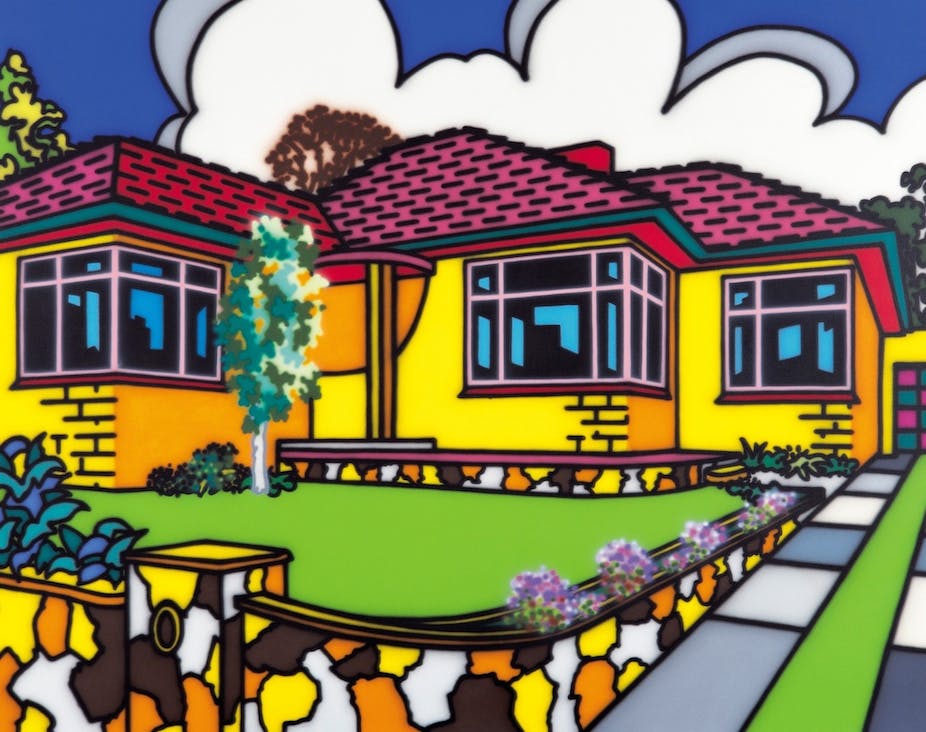In spite of what everyone believes through natural pride and vanity, the family house is an asset that depreciates.
Don’t be deceived that the value of property goes up and up, which of course it does. The rising prices are caused by the land becoming more expensive, not the house itself.
Rising property values create the illusion that the pile of bricks has appreciated. Alas, the building stock itself often sinks in value and within a couple of generations can even end up with a negative value, because the next owner pays to get it demolished.
With rising demand for the land, the chances of any given house becoming obsolete have increased. The same pressure on the land that causes property prices to exceed inflation simultaneously puts pressure on the existing building stock to be replaced by something more efficient. As a result, the lifespan of Australian houses is falling and the likelihood of the building stock appreciating is decreasing.
There are structural reasons that conceal the historical devaluation of Australian building stock. The bricks and mortar are often valued according to their replacement cost, because the calculation is performed for the sake of insurance. If a house burns down, say, it will cost a great deal to erect the same house again. The replacement cost is always greater than the original cost, thanks to the normal pressures of inflation on labour and resources. This valuation is logical if the decision is always taken to replace the house with a kind of replica; but the costing method obscures the underlying pattern that arises when houses are replaced not because of fire but because of dissatisfaction or obsolescence when the land-use is sub-optimal.
Because the suburbs were built on a sparse footprint, the existing stock is too low and sits on the land in the wrong place, often plonked in the middle of a quarter acre and seldom more than a storey or two high. As this footprint is proving unsustainable in every sense — and the signs of greater density are springing up on this corner or that — you could conjecture that few free-standing houses in Zone 1 Melbourne or counterparts in Sydney and Brisbane will escape demolition within a century.
Looked at historically, Australian development is hesitant and apologetic. We start with a single dwelling in the middle of a block. To fit more people on the allotment, we build a granny flat. Then we demolish both dwellings and erect three or four units. Then we look around for something else to knock down to build a couple more, but always apologetic low-rise, with shy footprint with setbacks and tentative profile, and still with poor prospects for longevity.
Slowly, we make the city denser; but stepwise, by short-term increments that have an expiry date like a mouldy cheese. At each stage, a lot of money is committed toward nothing for posterity, because our traditions have made us resistant to optimal land-use. No domestic construction conforming to existing setback rules is safe from demolition as demand for accommodation mounts and a replacement is indicated.
Ambitious home-owners go in for renovations, paying half the value of the property to achieve a new extension or new service areas. It might delight a family to have a larger kitchen or a bedroom in the roof. The problem is that the house is in the wrong place and would need another four storeys on top of it to be sustainable in a contemporary metropolis.
Australia puts so much money into obsolescent development based on tiny capital and tinier regulatory vision. Suburbia has long been recognised by critics as an ecological disaster, but much less attention has been paid to suburbia as an economic disaster.
We might ponder how the low-density suburbs damage the environment, first by instituting the least energy-efficient detached housing and second by forcing people into cars on our now strangled roads, which fill the air with carbon. But what is never contemplated is how the low-density pattern also has the effect of sucking Australian capital into a vacuum.
This is an extract of Robert Nelson’s latest book “The space wasters: the architecture of Australian misanthropy”, published by the Planning Institute of Australia, 2011.

